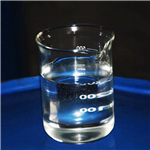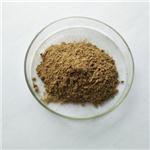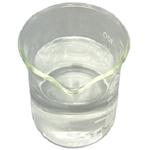- Xylene
-

- $1.00 / 1g
-
2024-04-25
- CAS:1330-20-7
- Min. Order: 1g
- Purity: 99
- Supply Ability: 20tons
- Dimethylbenzene
-

- $120.00 / 1KG
-
2024-01-18
- CAS:1330-20-7
- Min. Order: 1250KG
- Purity: 99.8%
- Supply Ability: 300T
- Xylene
-

- $100.00 / 1KG
-
2023-12-26
- CAS:1330-20-7
- Min. Order: 1KG
- Purity: 99%
- Supply Ability: g-kg-tons, free sample is available
Question and answer - Q:What is Xylene?
- A:Xylene is a colorless liquid that had a sweet odor. Xylene is flammable and practically insoluble. Xylene is primarily a synth....
- Sep 24,2019
|
| | Xylene Chemical Properties |
| Melting point | -34 °C | | Boiling point | 137-140 °C (lit.) | | density | 0.86 g/mL at 25 °C (lit.) | | vapor density | 3.7 (vs air) | | vapor pressure | 18 mm Hg ( 37.7 °C) | | refractive index | n20/D 1.497(lit.) | | Fp | 77 °F(lit.) | | storage temp. | Flammables area | | solubility | Chloroform (Soluble), Methanol (Slightly) | | form | Liquid | | color | APHA: ≤10 | | Odor | char. sweet odor | | explosive limit | 7% | | Water Solubility | <0.1 g/L (20 ºC) | | Merck | 14,10081 | | BRN | 1901563 | | Exposure limits | ACGIH: TWA 100 ppm; STEL 150 ppm
OSHA: TWA 100 ppm(435 mg/m3) | | Dielectric constant | 10.0(Ambient) | | Stability: | Volatile | | InChIKey | KAKOUNRRKSHVJO-UHFFFAOYSA-N | | LogP | 3.16 at 20℃ | | CAS DataBase Reference | 1330-20-7(CAS DataBase Reference) | | IARC | 3 (Vol. 47, 71) 1999 | | EPA Substance Registry System | Xylene (1330-20-7) |
| | Xylene Usage And Synthesis |
| Description | As one of the most common chemicals used in industry, Xylene it is commonly found in ink, rubber, varnishes, adhesives, jet fuel, gasoline, pesticides, perfumes, pharmaceuticals, and elsewhere. It can be used as a solvent and cleaner for acrylic antiquing sealers on concrete, a paint thinner, and a transfer agent for printed materials, among many other uses.
In histology, it is used as a clearing agent to prepare samples for coverslipping, as well as tissue processing and staining. As a wax solvent, it can remove paraffin from slides prior to use.
Paraxylene, one of its isomers, is also used as a precursor to terephthalic acid and dimethyl terephthalate, both important raw materials for the production of polyethylene terephthalate (PET), a type of plastic commonly used for bottles and other packaging. Various isomers of xylene are also used as a precursors for polyester fabric, tear gas, and other chemicals.
| | References | https://en.wikipedia.org/wiki/Xylene
http://sciencing.com/uses-xylene-5544817.html
http://www.toxipedia.org/display/toxipedia/Xylene
https://www.ncbi.nlm.nih.gov/pmc/articles/PMC2996004/
http://www.manmadediy.com/users/martin/posts/1374-how-to-make-a-gigantic-solvent-transfer
http://www.worldofchemicals.com/423/chemistry-articles/xylene-a-solvent-mixture-of-three-isomers.html
| | Description | Xylene is used as a solvent. In this application, the mixture of isomers is often referred to
as xylenes or xylol. Solvent xylene often contains a small percentage of ethylbenzene. Like
the individual isomers, the mixture is colourless, sweet smelling, and highly flammable.
Application of xylene is extensive and includes, but is not limited to, printing, rubber, and
leather industries.
Similarly, it is used as a cleaning agent for steel and silicon wafers. In the petroleum
industry, xylene is also a frequent component of paraffin solvents, used when the tubing
becomes clogged with paraffin wax. Xylene is incompatible with strong oxidisers and is
known to cause fires and explosions. There are three forms of xylene in which the methyl
groups vary on the benzene ring: (i) meta-xylene, (ii) ortho-xylene, and (iii) para-xylene.
These forms are referred to as isomers. Xylene is a colourless, sweet-smelling liquid.
Xylene occurs naturally in petroleum and coal tar. Chemical industries produce xylene
from petroleum. It is also used as a cleaning agent and a thinner for paint and in paints,
in glues, in printing inks, and in varnishes. Xylene evaporates quickly from the soil and
surface water into the air. | | Chemical Properties | Xylene occurs in the manufacture of different petroleum products and as an impurity in benzene and toluene. It is a colorless and flammable liquid. Commercial xylene is a mixture of three isomers, namely, ortho, meta, and para isomer. It is extensively used in different industries associated with paints, rubber, inks, resins, adhesives, paper coating, solvents, and emulsifi ers. Also, xylene is used as an important raw material in the manufacture of plasticizers, glass-reinforced polyesters, and alkyd resins. | | Chemical Properties | Also known as dimethylbenzene, C6H4(CH3)2 is an isomeric mixture of 0- m-, and p-xylene. It is a clear liquid with various grades having different boiling points, that is insoluble in water and soluble in alcohol and ether,and used in aviation gasoline, coatings, lacquers, rubber cements, organic synthesis, and polyester resin manufacture. | | Physical properties | Xylene is benzene to which two methyl groups have been added to two carbon atoms in the benzene ring. The addition of two methyl groups gives three isomers of xylene labeled according to the relative positions of the methyl groups. Ortho-xylene has methyl groups on consecutive carbons in the ring, meta-xylene's metyl groups are separated by a single carbon bonded to hydrogen atoms, and para-xylene has the methyl groups on carbon atoms on opposite sides of the ring. The three xylene isomers are abbreviated using o-,m-, p- for ortho, meta, and para, respectively. Xylene is used both as a mixture, where it is referred to as xylenes or xylol, and as individual isomers. Because their boiling points are close, separation using distillation is difficult. Therefore isomers are separated using techniques such as recrystallization and adsorption. Xylenes are flammable, colorless liquids with a pleasant odor. Xylene was first isolated from coal tar in the mid-19th century. The name xylene comes from the Greek word for wood xulon because xylene was obtained from the distillation of wood in the absence of oxygen. | | Uses | Aviation gasoline; protective coatings; solvent
for alkyd resins, lacquers, enamels, rubber cements;
synthesis of organic chemicals. | | Uses | Solvent; manufacture of certain
organic compounds; cleaning agent; component
of fuels. | | Uses | Xylene is used as a chemical feedstock in the chemical industry. Xylenes can undergooxidation where the side methyl groups are oxidized to give a carboxyl group (COOH)yielding a carboxylic acid. The particular acid produced depends on the isomer oxidized. Wheno-xylene is oxidized phthalic acid is produced, and when p-xylene is oxidized terephthalic acidresults. Terephthalic acid is one of the main feedstocks in making polyesters.Terephthalic acid reacts with ethylene glycol to form the ester polyethylene terephthalate(PET). PET is one of the most common plastics used as food and beverage containers. PETcontainers contain the recycling symbol with a number 1. PET is marketed using a numberof commercial names; the most generic of these is polyester. It is also the material known asDacron. Mylar is PET in the form of thin films. Although all three isomers of xylene are usedas chemical feedstocks, the greatest demand is for para-xylene to produce terephthalic acid.The smallest demand is for meta-xylene. Approximately 30 million tons of xylenes are usedannually worldwide. | | Definition | An organic
hydrocarbon present in the light-oil
fraction of crude oil. It is used extensively
as a solvent. There are three isomeric compounds
with this name and formula,
distinguished as 1,2-, 1,3-, and 1,4-dimethylbenzene
according to the positions
of the methyl groups on the benzene ring. | | Production Methods | Xylene is produced by catalytic reforming, and, depending
on the feedstock, yields of >85% can be achieved.
Commercially, xylene is also recovered from coal tar, yielding
a typical mixture of about 10–20% ortho, 40–70%
meta, and 10–25% para isomer. Impurities include ethylbenzene,
benzene, toluene, phenol, thiophene, and pyridine
(53, 438). | | General Description | A light colored to colorless liquid with a hydrocarbon odor. Flash point between 52 - 93°F. Less dense than water. Vapors are heavier than air. Vapors may irritate the eyes, nose, throat and respiratory tract. High vapor concentrations may cause central nervous system depression or damage. Liquid contact may irritate eyes and skin. Prolonged liquid contact mat result in defatting and drying of the skin. Avoid ingestion. | | Air & Water Reactions | Highly flammable. Water insoluble. | | Reactivity Profile | Vigorous reactions, sometimes amounting to explosions, can result from the contact between these materials and strong oxidizing agents. They can react exothermically with bases and with diazo compounds. Substitution at the benzene nucleus occurs by halogenation (acid catalyst), nitration, sulfonation, and the Friedel-Crafts reaction. | | Health Hazard | Inhalation or contact with material may irritate or burn skin and eyes. Fire may produce irritating, corrosive and/or toxic gases. Vapors may cause dizziness or suffocation. Runoff from fire control or dilution water may cause pollution. | | Health Hazard | Exposures to xylene cause toxicity and adverse health effects to animals and humans. Acute and chronic exposure to xylene induces adverse effects on the skin and respiratory system of animals and humans. Prolonged exposure to xylene demonstrated burning effect, drying, defatting of skin, eye irritation, lung congestion, CNS excitation, depression, mucosal hemorrhage, and mild liver damage | | Safety Profile | Moderately toxic by
intraperitoneal and subcutaneous routes.
LWdly toxic by ingestion and inhalation. An
experimental teratogen. Human systemic
effects by inhalation: olfactory changes,
conjunctiva irritation, and pulmonary
changes. Experimental reproductive effects.
Mutation data reported. A human eye
irritant, An experimental skin and severe eye
irritant. Some temporary corneal effects are
noted, as well as some conjunctival irritation
by instillation (adding drops to the eyes one
drop at a time). Irritation can start @ 200
ppm. A very dangerous fire hazard when
exposed to heat or flame; can react with
oxidzing materials. To fight fire, use foam,
CO2, dry chemical. When heated to
decomposition it emits acrid smoke and
irritating fumes. See also other xylene
entries. | | Carcinogenicity | Mixed xylene and the individual xylene
isomers have tested negative in a wide variety
of genotoxic assays; they are considered to be
nonmutagenic. The IARC has determined that there is
inadequate evidence in humans and experimental
animals for the carcinogenicity of xylenes. | | Environmental Fate | Xylene is an eight carbon aromatic hydrocarbon compound
that is a minor component of all gasoline. Xylene is
a colorless, flammable liquid that is about 14% lighter than
water. It has a sweet, pungent odor. Xylene has a molecular
weight of 106.7 g mol�1. At 25 �C, xylene has a solubility in
water of 106 mg l�1, an estimated vapor pressure of
6.6–8.8mm Hg and a Henry’s law constants ranging from
5.18 � 10�3 to 7.18 � 10�3 atm-m3 mole�1. The log octanol/
water partition coefficient is 3.12. Conversion factors for
xylene in air are as follows: 1 mgm�3 ? 0.23 ppm;
1 ppm? 4.36 mgm�3.
If released to air, the moderate vapor pressure predicts
xylene will exist solely as a vapor in the ambient atmosphere.
Vapor-phase xylene will be degraded in the atmosphere by
a reaction with photochemically produced hydroxyl radicals;
the half-life for this reaction in air is estimated to be 2 days.
Xylenes do not contain chromophores that absorb at wavelengths
>290 nm and therefore are not expected to be
susceptible to direct photolysis by sunlight.
If released into water, xylene would only moderately adsorb
to suspended solids and sediment based upon an estimated Koc
range of 36–365. Volatilization from water surfaces is expected
to be the dominant fate process based upon the estimated
Henry’s law constant. Estimated volatilization half-lives for
a model river and model lake are 1 h and 4 days, respectively.
Using a standard biochemical oxygen demand (BOD) dilution
technique and an activated sewage inoculum, a theoretical BOD
of 72% was observed over a 20-day incubation period for
a mixture of xylene isomers, suggesting that biodegradation is an important environmental fate process in water. Hydrolysis is
not expected to be an important environmental fate process
since this compound lacks functional groups that hydrolyze
under environmental conditions.
If released to soil, xylene is expected to have high to
moderate mobility in the subsurface based upon the range of
known Koc values. Volatilization of xylene from moist soil
surfaces is expected to be an important fate process. Xylene may
volatilize from dry soil surfaces based on the moderate vapor
pressure.
Using a measured log Kow of 3.12, the USEPA’s EPI Suite
computer program estimates both a bioconcentration factor
and a bioaccumulation factor of 110.7. These predicted bioaccumulation
and biomagnifications values are relatively low.
Xylene would therefore not be expected to be found in the
tissues of fish or wildlife as (1) xylene contains no persistent
functional groups (e.g., chlorine, bromine); (2) exposure
would be expected to be low based on a low half-life in the
environment; and (3) subsequent to exposure, trace levels of
xylene would be rapidly metabolized by the liver (similar to
what is seen with other organic compounds). | | Purification Methods | Usual impurities are ethylbenzene, paraffins, traces of sulfur compounds and water. It is not practicable to separate the m-, and p-isomers of xylene by fractional distillation, although, with a sufficiently efficient still, o-xylene can be fractionally distilled from a mixture of isomers. Purify (and dry) by fractional distillation from LiAlH4, P2O5, CaH2 or sodium. This treatment can be preceded by shaking successively with conc H2SO4, water, aqueous 10% NaOH, water and mercury, and drying with CaCl2 for several days. Xylene can be purified by azeotropic distillation with 2-ethoxyethanol or 2-methoxyethanol, the distillate being washed with water to remove the alcohol, then dried and fractionally distilled. [Beilstein 5 H 360.] | | Toxicity evaluation | The mechanism of toxicity is suspected to be similar to other
solvents that rapidly induce anesthesia-like effects, i.e.,
a ‘nonspecific narcosis’ due to disruption (solvation) of the
integrity of the cellular membranes of the central nervous
system (CNS). The effect is similar to the ‘high’ experienced
upon exposure to other hydrocarbon solvents.
As seen with exposure to other hydrocarbon solvents, upon
inhalation, xylene is moderately toxic and may cause irritation
of the respiratory tract and narcosis. Xylene appears to produce
reversible effects upon the liver, renal, and nervous systems.
The nervous system appears to be the most sensitive to the
effects of xylene. High level xylene exposures produced incoordination,
ataxia, unconsciousness and eventually, death.
Lower level acute exposures in man produce dizziness, exhilaration,
and confusion. Although the actual biochemical
mechanism of toxicity has not been discerned, the narcotic effects seen are most likely related to its physical solvent
properties. |
| | Xylene Preparation Products And Raw materials |
|